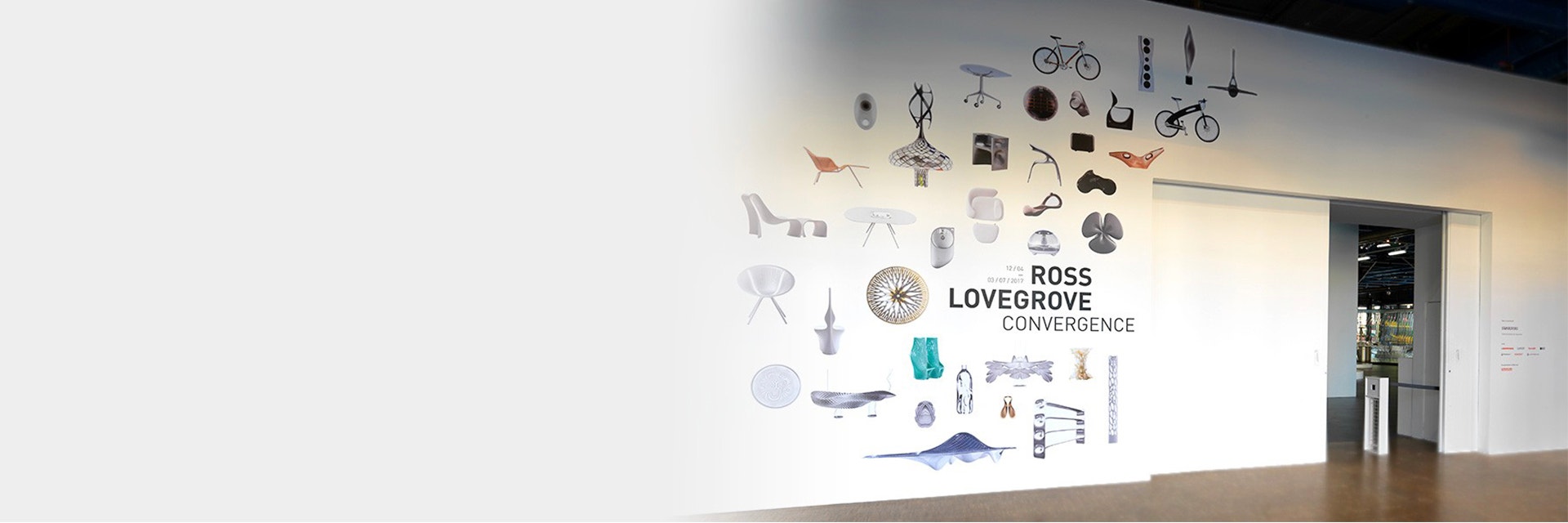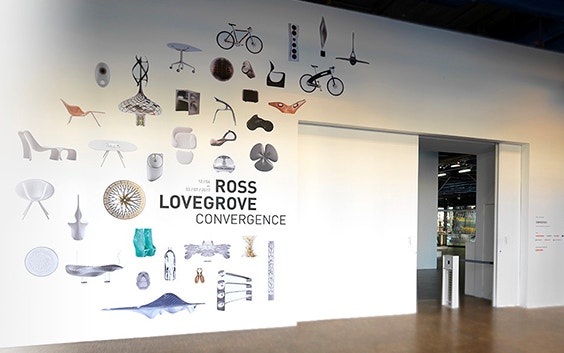
INTERVIEW
Ross Lovegrove at the Centre Pompidou: 34 Years of Convergent Design
One of the biggest contemporary names in Design, Ross Lovegrove exhibited an introspective collection of his work called “Mutations — Creations” at the Centre Pompidou in Paris. Throughout his long and varied career, Ross has continuously pushed form and function with modern technologies — including 3D printing — to produce organic, environmental designs. We interviewed him to find out about the philosophy behind his work, why we should strive towards sustainable design, and what role 3D printing can really play in innovative design.
Tell me a little bit about yourself: your background, what inspires you as a designer etc.
That’s a big one. I’m quite old now so it would take a few years to tell you about it! You can call me a designer, I suppose, but I’m not quite sure if I know what that is — I look into qualities that immediately attract people through a kind of emotional intelligence so that they respond in a primeval, instinctive way towards things. And sometimes, things are also valued because of their logic, the way that they’re perceived or put together or function, so I swing between those two driving forces.
I’ve been in design since I was 16, and I’ve worked all over the world with everybody from Issey Miyake to Herman Miller to Sony, the list is endless. I’m looking for new territories in terms of the projects that I work on. I’ve tried to stay relevant as different conditions change, and technologically, I’d like to use that change to make plans or innovations. That might mean purely aesthetic innovation, but it also might mean something more intellectual. So it depends on what I work on because I’m an industrial designer by profession, which means that it’s pretty nebulous. People like me can design everything from a brush to a suitcase to a watch, a shoe to an airplane. So it’s a kind of endless profession, and I try not to repeat myself. I like to be challenged.
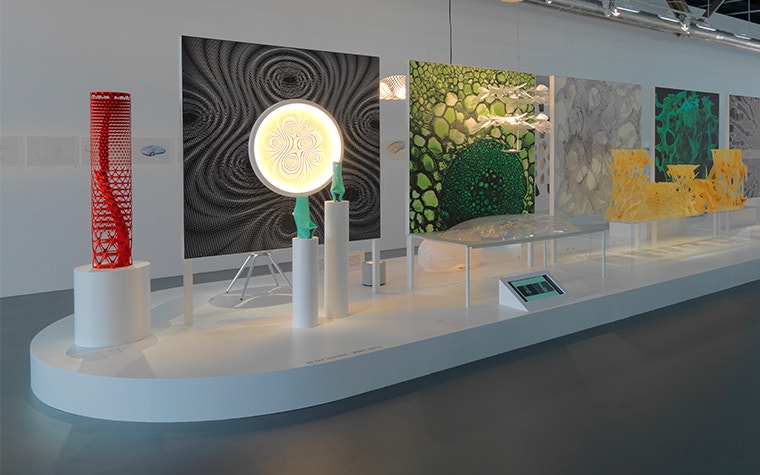

You use a lot of digital technologies. Is that the way you see yourself pushing the boundaries of design?
Yes. If you want to do new things, you genuinely need a new process. You can apply that to anything you want, from art to science. When you get new technology, you’d be a fool not to use it, especially in the creative realm, in design. So I’ve always followed that.
There’s a paradigm shift once there’s no precedent, and I’ve always done that, right back to the early days of the Royal College of Art. I designed a camera in 1982, which was a redesign of the Kodak disc camera, which was brand new technology at the time. And although it was brand new technology for the way you would harness light and capture imagery, the casing for it was so disappointing. So brutally ordinary. And so I took that on as my master’s degree project. When there’s a new technology, there is no precedent, and you’re completely free, like an artist, to set the pace for what that object could be.
There’s this incredible shift in redesign all the time. I’m interested in that action as progress, I’m not interested in redesigning something just to create more pollution. I’m somebody who’s very guarded about the nature of humanity, and I think it’s important to not have technology imposed upon us. I really enjoy being still engaged in the real, physical world — which is what I think most people enjoy.
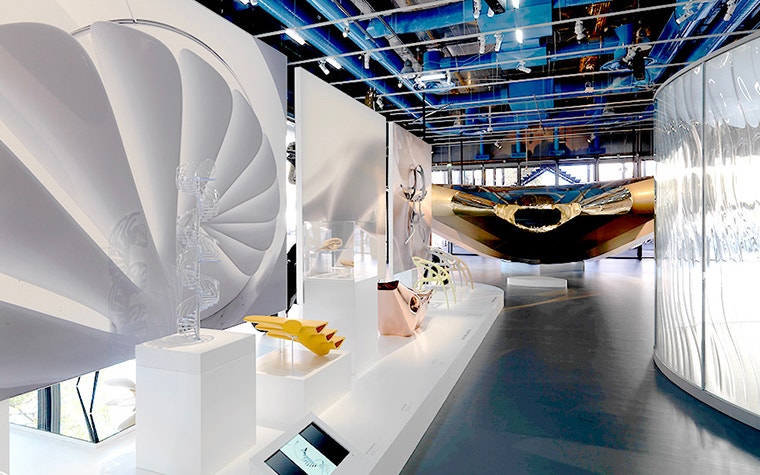

Why did you choose 3D printing as a means to create your designs?
I’d be a fool not to. I’ve always been interested in it, and I’ve lived through all of these processes — I started out in school with a compass, doing engineering drawings. And when the whole idea of computational design came about, it was very difficult at the beginning. But the software and programs that developed have given rise to the way we make things.
In the past, I would make very complex 3D or 4D drawings without knowing if those things were possible to make. Of course, they were very difficult to make because of the very rudimentary processes by which we still make most things. If you look at the history of the camera, which was initially made from wood, leather, paper, glass, and a lens, and was then replaced mainly by metal-bodied cameras — that gave rise to a whole new aesthetic. Where is the morphogenesis of a camera now? Do we deposit the particular materials we need in different states at a nano-dimension? So you can go from a lens, transparency, to an opacity through to a tactile rubber through to something else, all in one object through molecular depositions of material? That’s amazing! And I’m in. Why would I not want to be involved with that?
The products we could make like that would naturally fall into a lifecycle, so we integrate the products we make into a new ecosystem. So not only do we get the fourth dimension, a fourth-level era of industrialization, we get new esthetics, and we get things made with only the materials we need to create a synergy with our environment. I think that’s incredible. So you asked me a simple question, and you’ve opened a can of worms.
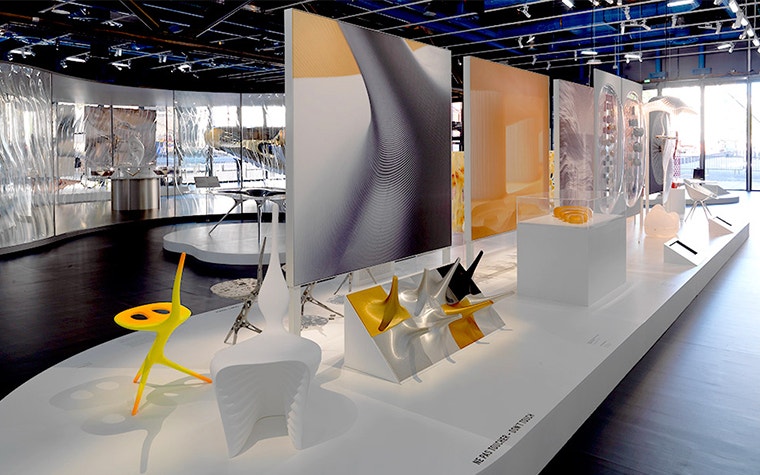

The environment is clearly very important to you; can you tell me some more about how you try to design sustainably?
I’ve been to a lot of factories, and they really disturb me. One of the issues I have as a designer is that I see it as a pollutant, I see it as just filling the world with stuff. So this idea of convergence that I find expressed at the Pompidou is where you put together everything you know. Evolutionary principles, so morphogenesis, anticipating what will come, computational design, the digital realm, materials, logic, and science — you try and put it all together so that whatever you make is embedded with all of those qualities. Of course, you’ve got to apply it to the right things, so when you’re building a chair, it’s a bit ridiculous. We have lovely chairs already.
But with something a bit more technical, like the telephone, there’s loads of potential for material multiplicity and nano-cellular fabrication. And with 3D printing, I’ve got almost unlimited access to form creation, plus the fact that in the past, even drawing what I designed would take a month easily. The whole process in the past might have taken four months — now it can take four weeks. And it’s not less valuable because of that! It’s incredible because I create the data in my studio, the data file is encrypted, goes out to Materialise, they open it, they talk to their engineers about how they’re going to build it, they press a button, and they make it! So it’s now possible to make something in three days. It’s not compromised; it’s actually incredible.


Could you tell me a bit about your exhibition, “Mutations — Creations”? I believe it’s separate from “Imprimer le Monde,” which is currently on display at the Pompidou?
It’s completely separate, and it’s not in competition with “Imprimer le Monde,” it’s compatible. Because of my career, I’ve always gone from the analog to the digital. And you’ll see that. Not in a very chronological way, but you will see forms that come from very organic essentialism, which is an organic way of thinking coupled with organic form. And then, as time progresses, you will see the intervention of computational design, and then what I’m doing with Materialise, which is really beautiful, I think — I’m printing some of my work based on these punctuations throughout the show. I want to treat this technology as a sort of art form, so the convergence is between design, nature, and art. I’m also trying to use these models to align myself with the architecture and culture of the Centre Pompidou.
Can you tell me about your favorite objects in the exhibition? And what the inspiration was behind those designs?
It’s a real opportunity for me — it’s an introspective, not a retrospective. It’s really taking a look inside my world. I have 24 of my sketchbooks housed in a glass pavilion at the core of the exhibition, and this is my world, this is what I’m capable of. These are my drawings, private thoughts, and they almost predict the advent of 3D printing and organic design, which go hand in hand. There are three tables, each containing eight notebooks. One deals with design, one deals with nature, and one deals with art. And what I’m deliberately doing is mixing them up a little bit. So something that you think should be art is actually design and vice versa.
On top of the design table, there’s a car on a stick, which is an autonomous vehicle in the shape of a ball which I’ve worked on for the last 16 – 18 years, and that’s a Materialise print, and then the other side is going to be nature, and there’ll be my 1888 study skull from Oxford University. It’s absolutely fantastic, it’s an elephant skull. And in the middle, my favorite object is a new thing that doesn’t exist. It’s called “Convergence,” and I’m trying to join that car and stick with the elephant skull, to arrive at a piece of contemporary sculpture, which is very primal.
Share on:
You might also like
Never miss a story like this. Get curated content delivered straight to your inbox.
